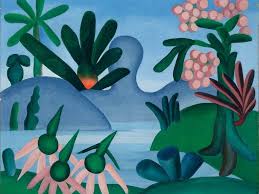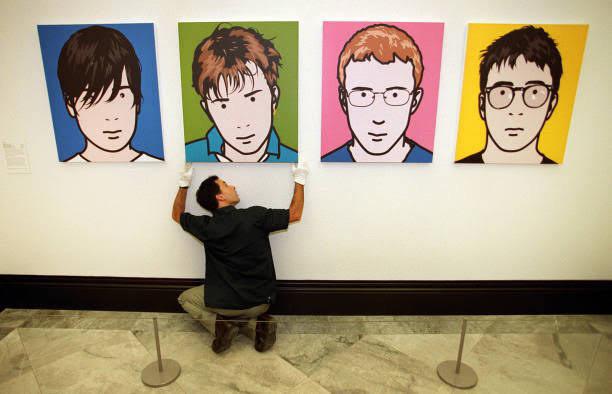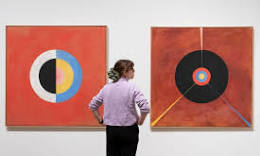The Transformative Experience of Art Exhibitions
Art exhibitions are more than just displays of creativity; they are immersive experiences that have the power to inspire, provoke thought, and evoke emotions in viewers. Whether held in a traditional gallery setting or a contemporary art space, art exhibitions offer a unique opportunity for artists to showcase their work and for audiences to engage with art on a deeper level.
Exploring Diverse Perspectives
One of the most compelling aspects of art exhibitions is the diverse range of perspectives and artistic styles they present. From abstract paintings to avant-garde sculptures, each exhibition brings together works that challenge conventional norms and push boundaries. This diversity allows viewers to explore new ideas, cultures, and ways of thinking through the lens of art.
The Power of Curated Spaces
Curated spaces play a crucial role in shaping the viewer’s experience at an art exhibition. The careful selection and arrangement of artworks create a narrative that guides visitors through a visual journey. The interplay of light, space, and ambiance enhances the impact of each piece and fosters a deeper connection between the viewer and the artwork.
Fostering Dialogue and Reflection
Art exhibitions serve as platforms for dialogue and reflection on various social, political, and cultural issues. Through their work, artists often address pressing topics such as identity, justice, environmental sustainability, and human rights. By engaging with these themes in a visual context, viewers are prompted to reflect on their own beliefs and values.
Celebrating Creativity and Innovation
Art exhibitions celebrate the boundless creativity and innovation of artists from around the world. They provide a stage for emerging talents to share their unique visions with a wider audience and establish themselves within the art community. Through exhibitions, artists have the opportunity to experiment with new mediums, techniques, and concepts that challenge conventional notions of art.
In conclusion, art exhibitions offer a transformative experience that transcends mere visual appreciation. They invite viewers to engage with art on a profound level, fostering dialogue, reflection, and appreciation for creativity in all its forms.
8 Essential Tips for Enriching Your Art Exhibition Experience
- Plan your visit in advance to make the most of your time.
- Take your time to appreciate each artwork and read any accompanying information.
- Respect the art by not touching or getting too close unless allowed.
- Consider the artist’s perspective and try to understand their message or inspiration.
- Engage with the art by discussing it with others or jotting down your thoughts.
- Capture memories with photos, but be mindful of rules regarding photography.
- Support artists by purchasing prints or merchandise from the exhibition’s shop.
- Visit different types of exhibitions to broaden your artistic horizons.
Plan your visit in advance to make the most of your time.
Planning your visit to an art exhibition in advance is a valuable tip that can enhance your overall experience and ensure you make the most of your time. By researching the exhibition beforehand, noting key artworks or artists you wish to see, and checking the exhibition schedule, you can create a structured itinerary that allows you to navigate the space efficiently and focus on the pieces that resonate with you. This approach not only helps you appreciate the art more deeply but also gives you the opportunity to engage with the themes and narratives presented in a meaningful way.
Take your time to appreciate each artwork and read any accompanying information.
When attending art exhibitions, it is essential to take your time to fully appreciate each artwork and read any accompanying information provided. By immersing yourself in the details of the piece and understanding the context in which it was created, you can deepen your connection with the artwork and gain a richer appreciation for the artist’s intent. Taking the time to engage with each artwork allows you to explore its nuances, symbolism, and techniques, enhancing your overall experience and fostering a deeper understanding of the artistic expression on display.
Respect the art by not touching or getting too close unless allowed.
Respecting the art on display at exhibitions is paramount, and one way to show this respect is by refraining from touching or getting too close to the artwork unless explicitly allowed to do so. Maintaining a respectful distance helps preserve the integrity and condition of the pieces, ensuring that they can be enjoyed by future viewers. By adhering to this guideline, visitors demonstrate their appreciation for the artist’s work and contribute to a positive and respectful environment for all attendees.
Consider the artist’s perspective and try to understand their message or inspiration.
When attending art exhibitions, it is essential to consider the artist’s perspective and delve into their message or inspiration behind the artworks on display. By taking the time to understand the artist’s creative process, motivations, and underlying themes, viewers can gain a deeper appreciation for the artwork and connect more intimately with its intended meaning. This practice allows for a richer and more meaningful experience at art exhibitions, as it enables viewers to explore the world through the artist’s eyes and engage with art on a profound level.
Engage with the art by discussing it with others or jotting down your thoughts.
To enhance your experience at art exhibitions, consider engaging with the art by discussing it with others or jotting down your thoughts. Sharing perspectives and insights with fellow art enthusiasts can offer new insights and deepen your understanding of the artworks on display. Additionally, taking the time to reflect on your own thoughts and emotions in writing can help you process the visual stimuli and connect more intimately with the artistic narratives presented. By actively engaging with the art in these ways, you can enrich your overall experience and develop a deeper appreciation for the power of creativity and expression.
Capture memories with photos, but be mindful of rules regarding photography.
When attending art exhibitions, it’s a wonderful idea to capture memories with photos to preserve the beauty and inspiration of the artworks you encounter. However, it’s essential to be mindful of the rules and guidelines regarding photography set by the exhibition organizers. Some exhibitions may have restrictions on photography to protect the intellectual property rights of artists or maintain the integrity of the viewing experience for all visitors. By respecting these rules, you can ensure a harmonious environment for everyone to appreciate and enjoy the art on display.
Support artists by purchasing prints or merchandise from the exhibition’s shop.
Supporting artists by purchasing prints or merchandise from the exhibition’s shop is a meaningful way to show appreciation for their work and contribute to their creative endeavors. By investing in prints or merchandise, you not only bring a piece of the artist’s vision into your own space but also help sustain their artistic practice. This support enables artists to continue producing compelling artworks and sharing their unique perspectives with a broader audience. Embracing art in this tangible form allows you to connect with the artist’s creativity on a personal level while fostering a sense of community within the art world.
Visit different types of exhibitions to broaden your artistic horizons.
To broaden your artistic horizons, it is beneficial to visit different types of art exhibitions. By exploring a diverse range of exhibitions, from traditional to contemporary, you expose yourself to various artistic styles, themes, and perspectives. This exposure not only enriches your understanding of art but also inspires you to appreciate the depth and breadth of creativity across different genres. Embracing this diversity in exhibitions allows you to expand your artistic vocabulary and develop a more nuanced appreciation for the multifaceted world of art.





